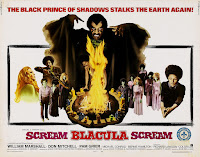THE BIG BOSS (1971)
(Cantonese audio –
30th Anniversary Hong Kong Legends DVD)
On July 20th 1973, a death sent shock-waves
through the worlds of cinema, martial arts and beyond. It was the tragic sudden
death of Bruce Lee, who at only 32 years of age had already become the first
global Asian superstar after just four completed films, only one of which had
even been made by a Hollywood studio. Bruce would go on to provide an
awe-inspiring legacy of influence to this day. He was a hero to an entire oriental
culture who had no modern heroes. His life integrated the highbrow development
of the spirit through eastern philosophy as well as popularising martial arts
to the masses from western film stars such as pupils James Coburn and Steve
McQueen to Miss Piggy, the Osmonds, comic books, music and more. He has become one of the most famous and
important role models in the world.
Lee Jun-Fan (his Cantonese birth name) was the son of Lee
Hoi-chuen a famous Cantonese opera and film star in 1940. He was born in San
Francisco but the family relocated to Hong Kong when he was a child. His name’s
meaning of ‘Return again’ was given to him by his mother as she felt he would
return to the States later in life. This he did, but not till the age of 18
after an eventful childhood. The circumstances of his leaving were
controversial. Despite an extensive child film acting career of some note, he
was by no means a pampered soft child, regularly getting into street fights
which developed in him a life-long taste for such combat. In 1950s Hong Kong, thousands
had fled to the island from the hideous communist oppression of the mainland.
This created overcrowding, which on the streets led to territorial gang battles
amongst the young. The result of one such street brawl in 1959 revealed to
Bruce that he had beaten the son of a Hong Kong police officer. His father gave
him $100 and suggested he lay low over in in America.
Once in Seattle, Bruce applied himself diligently both to
philosophy studies (where he met his wife Linda) and martial arts, setting up
his own school to teach and construct his own ‘style without style’. He
believed the individual’s honest expression of the human body was what counted
and so Jeet Kune Do (the Way of the intercepting Fist) was born. In 1964, his jaw-dropping demonstrations of
two-finger press-ups and stunning one-inch and six-inch punches at a public
event got him noticed by William Dozier, producer of BATMAN and THE GREEN
HORNET TV shows.
Soon after, Bruce found himself on U.S. TV playing Kato,
sidekick of the latter character between 1966-67. Despite the western profile
this accorded him, Bruce became dissatisfied with the limited portrayal it
offered for his race and left the series. After a more truthful guest-starring
martial arts role in the series LONGSTREET, he took a hard look at how to
continue representing himself on screen. James Coburn advised him to forget TV
as it would ‘eat up his talent’. He took the brave step of returning to Hong
Kong.
Back in his youthful environment, Bruce soon struck up a
profitable partnership with the producer Raymond Chow of Golden Harvest films.
Here he would begin his ascendancy as a film actor in 1971 with THE BIG BOSS, a
very low-budget (under $100,000) take with an incomplete script and a
restrictive director Lo Wei. Bruce plays
Cheng Chao-An, a migrant Chinese mainlander who seeks work in Bangkok via his
family. He soon uncovers a plot at the ice factory involving the trafficking of
heroin within the ice blocks and despite a promise of pacificm made to his
elderly mother back home, he must fight to protect the workers and revenge his
cousins murdered by the gangster business owners.
On the downside, it’s a rough movie debut to be sure and has
some laughable plot flaws. Why does the oily diplomat of a manager bother to successfully
bribe two of the workers to forget seeing the drug packages, only to
immediately have his thugs bump them off outside? Also, the scene where Cheng
sees for himself what’s inside the ice is hilarious ; aside from heroin bags,
he spots glaringly impossible-to-disguise corpses stored within the blocks as
well. Hardly effective secret business.
The other weakness is that THE BIG BOSS is half over before we
get to see Bruce in action, when Cheng is forced to take action to defend his
people against the boss’s evil minions. Until then, we have to watch him play
passive and sweet with an assortment of embarrassed grins and grimaces of
coiled frustration. But the action is worth waiting for. Bruce’s elastic
physique, kicks and punches deliver mightily in wide shots without trick
effects or annoying quick cuts. The three fight scenes he has are a great
introduction to his technique for fans and show utter commitment to athleticism
and purpose.
In the ending, a philosophical theme is shown here that will
also become familiar through his films. As he kneels by the boss’s body,
drenched in blood from the carnage, the police turn up. The female cousin looks
longingly on, trying to help but Bruce allows the cops to take him; he knows
that all violence has consequences. A price must be paid for the taking of
life, no matter how righteous it may seem (or how cool it looks).
As his character is calmly led away in a long shot, Bruce Lee’s
movie career was about to explode with unprecedented consequences of a far more
positive kind…






